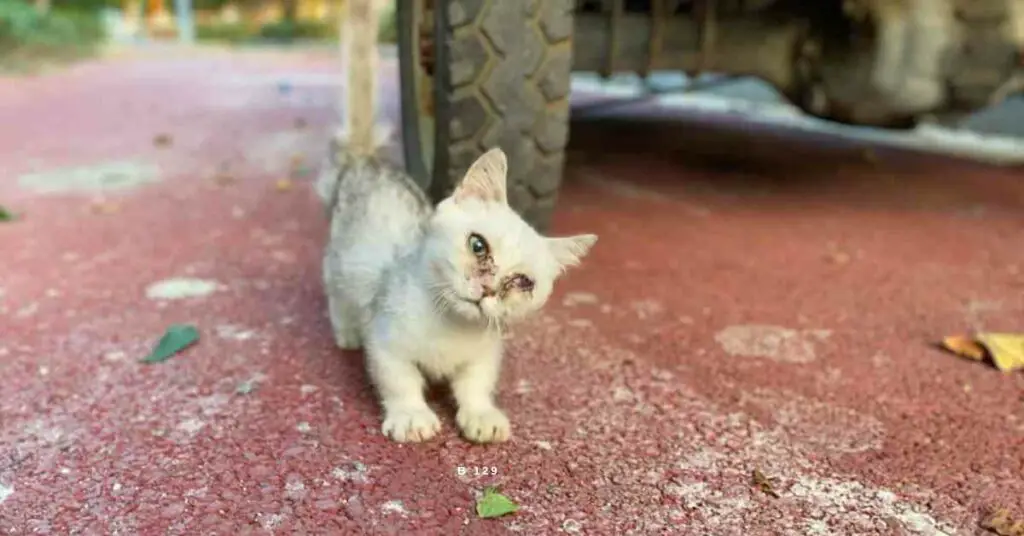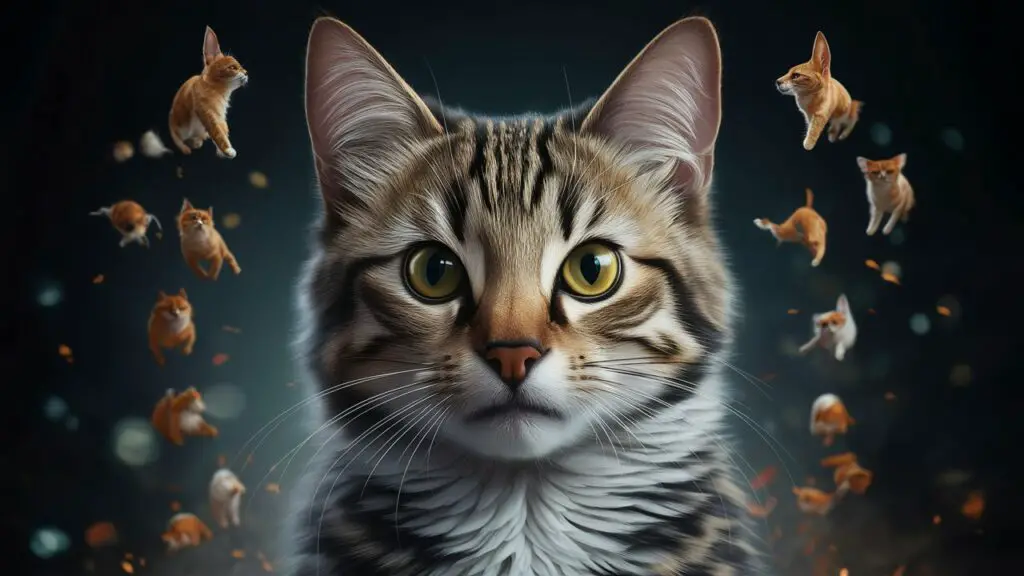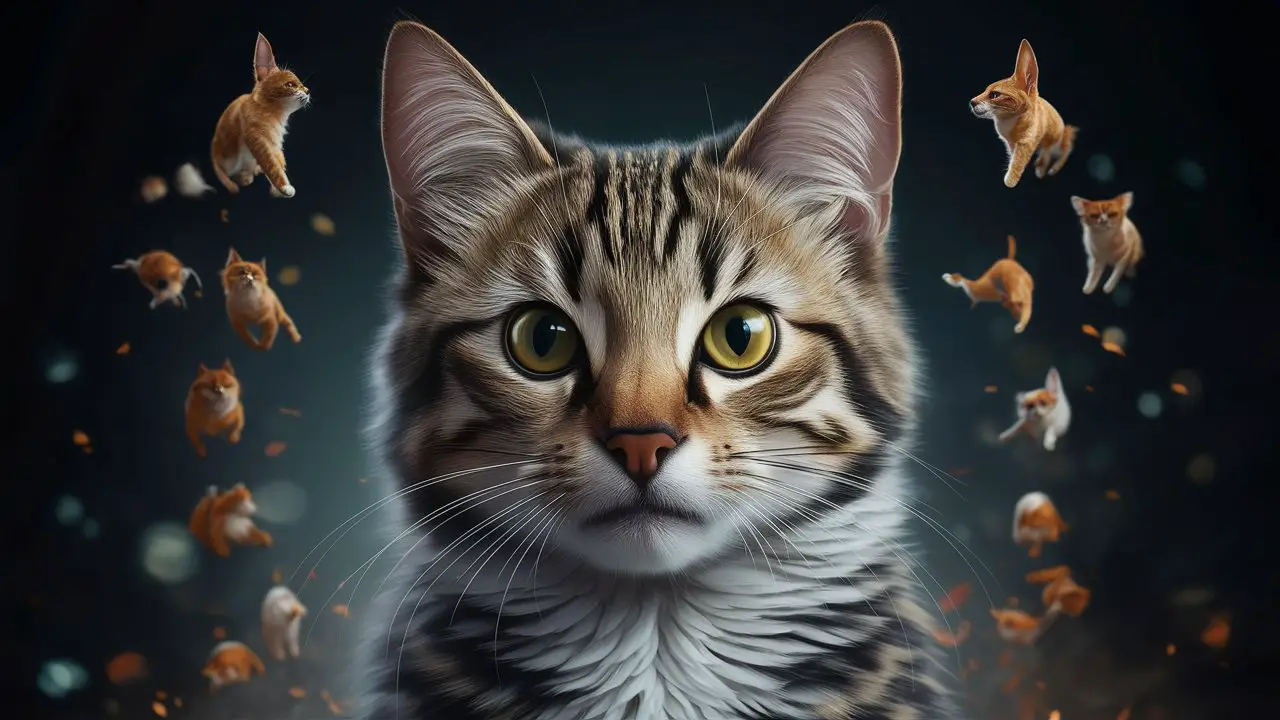Every time I look at my two rescue cats, I can’t help but wonder about their past lives. It’s hard to believe such wonderful animals ever needed rescuing. Lychee, my little rescue kitten, was wandering alone under a waste collection vehicle in China when I found him.

Sick and tiny, he was all by himself. Was he abandoned or born on the streets?, Does he remember his parents? These questions lingered in my mind, so I decided to find out just how much of their past rescue cats can recall.
The Science of cat Memory

Cats have an impressive short-term memory of about 16 hours, which is much longer than that of most small animals. This short-term memory is just a part of their cognitive abilities; cats also have a long-term memory that can last a lifetime.
What Makes It Into Long-Term Memory?
Not all experiences make it into a cat’s long-term memory. The ones that do are typically frequent events, familiar people and animals, or significant experiences, whether positive or negative. For example, a cat might remember the routine before getting a treat or where their favorite toy is kept.
A less happy memory cats might have is associating a pet carrier with vet visits and trying to hide when they see it. Our kitten Lychee knows it’s medicine time when we lift him onto his soft cactus flower bed. His tail starts flicking anxiously, but with a gentle stroke, he soon relaxes and starts purring.
Behavioural Indicators of Memory
Behavioural signs can give us clues about a rescue cat’s memory. Fear or anxiety around specific triggers, such as certain objects or people, might indicate a memory of a negative experience. Similarly, affectionate behaviour towards certain toys or places might suggest a positive memory. Cats are known to remember their owners even after long separations, showcasing their ability to retain long-term memories.
Emotional Impact of Past Experiences
The emotional impact of past experiences on rescue cats can be profound. Traumatic events can leave lasting impressions, causing stress or anxiety in certain situations. However, the resilience and adaptability of cats often shine through as they learn to trust and bond with new owners. The emotional lives of cats are complex, and understanding their past can help in providing better care.
Helping Rescue Cats Heal
Helping a rescue cat heal involves creating a safe and nurturing environment. Gradual exposure to new experiences, consistent routines, and positive reinforcement are key. Patience and understanding are essential in building trust and helping them overcome past traumas. For tips on helping rescue cats adjust to a new home check out our guide to preparing your home for a rescue animal.
The Lifelong Impact of Early Experiences
Early experiences in a cat’s life, whether positive or negative, can have a lifelong impact on their behavior and emotional well-being. Kittens who experience nurturing and positive interactions with humans are more likely to be affectionate and trusting. Conversely, those who face neglect or trauma may develop fear-based behaviors and anxiety. Understanding these early experiences can help us provide better care and support for rescue cats.
The Role of Socialization
Socialization plays a crucial role in shaping a cat’s behaviour and memory. Cats that are well-socialized during their early weeks are more likely to adapt well to new environments and people. This socialization period is critical for developing positive behaviors and reducing fear and aggression. For rescue cats, re-socialization might be necessary to help them adjust to their new homes. Techniques such as gradual exposure to new experiences and positive reinforcement can aid in this process.
Case Studies and Anecdotal Evidence
Real-life stories and case studies provide valuable insights into how rescue cats remember their past. Many cat owners report their pets displaying behaviours that suggest memories of previous homes or experiences. For instance, a cat might show fear when hearing a specific sound that was associated with a traumatic event in its past.
On the other hand, some rescue cats form strong attachments to their new owners, indicating their ability to develop new, positive memories.
The Healing Power of Love and Patience
The transformation of rescue cats in loving homes is a testament to the healing power of love and patience. Cats that were once fearful and anxious can become affectionate and confident with consistent care and positive reinforcement. This change not only benefits the cats but also enriches the lives of their owners.
Providing a stable and loving environment helps rescue cats build new, happy memories, replacing the negative ones from their past.
The Science Behind Purring
Purring is more than just a sign of contentment; it has healing properties for cats. Research suggests that the vibrations produced by purring can help heal bones and tissues, reduce pain, and decrease stress levels. This self-healing mechanism can be particularly beneficial for rescue cats recovering from trauma or injury.
Understanding the science behind purring can help us appreciate the resilience of cats and their ability to heal from past experiences.
Final thoughts A Journey of Healing and Trust
Rescue cats often come with a past that we can only imagine, but through understanding and compassion, we can help them build a bright future. Their ability to remember both positive and negative experiences underscores the importance of creating a nurturing environment.
By recognizing the signs of their past and providing consistent love and care, we can help them heal and thrive. Every rescued cat is a testament to the power of kindness and the incredible resilience of these wonderful animals.
By supporting animal rescue efforts such as ours here at Middle Kingdom Rescue and spreading awareness, we can make a significant difference in the lives of many cats, giving them a chance to create new, happy memories.

